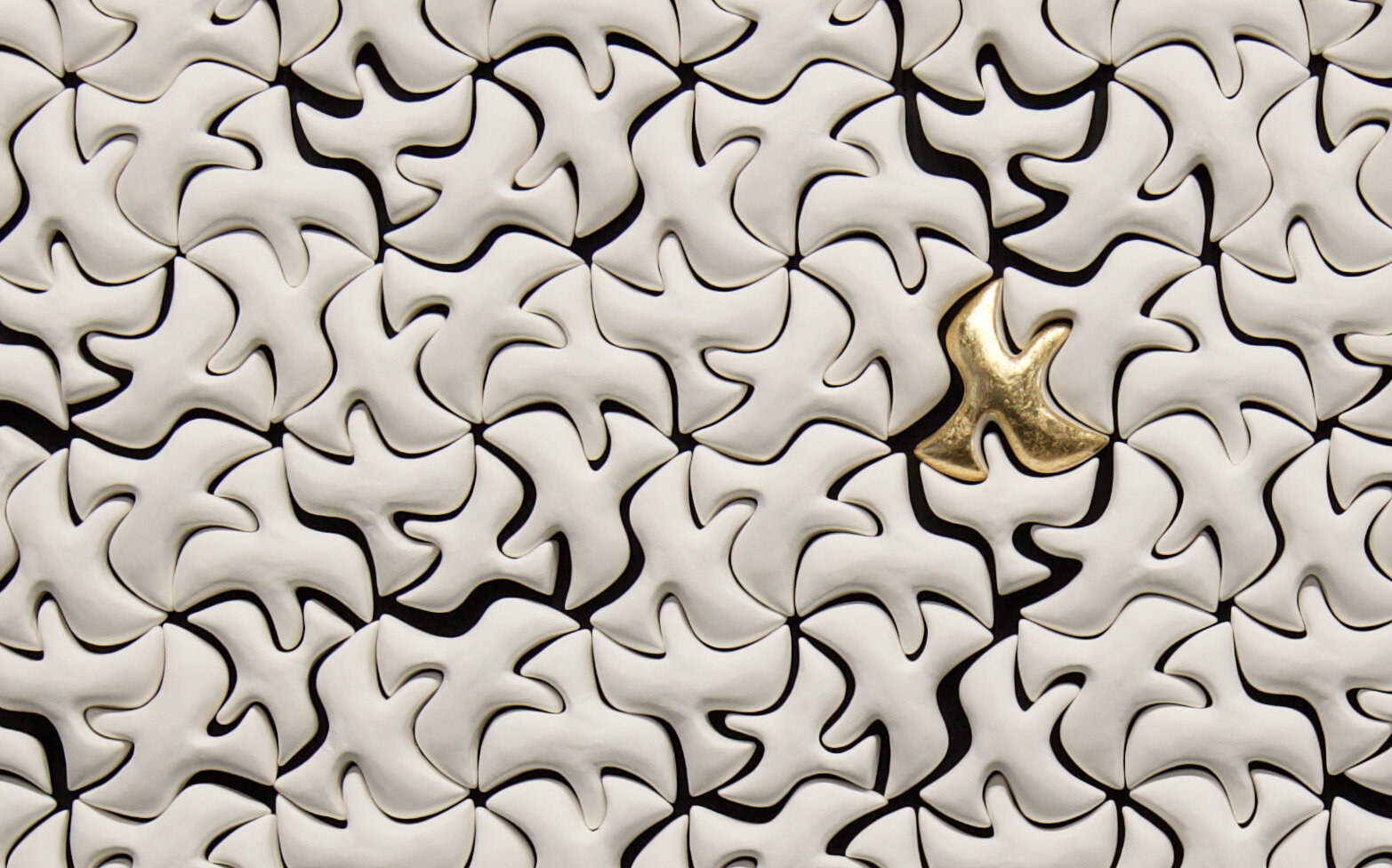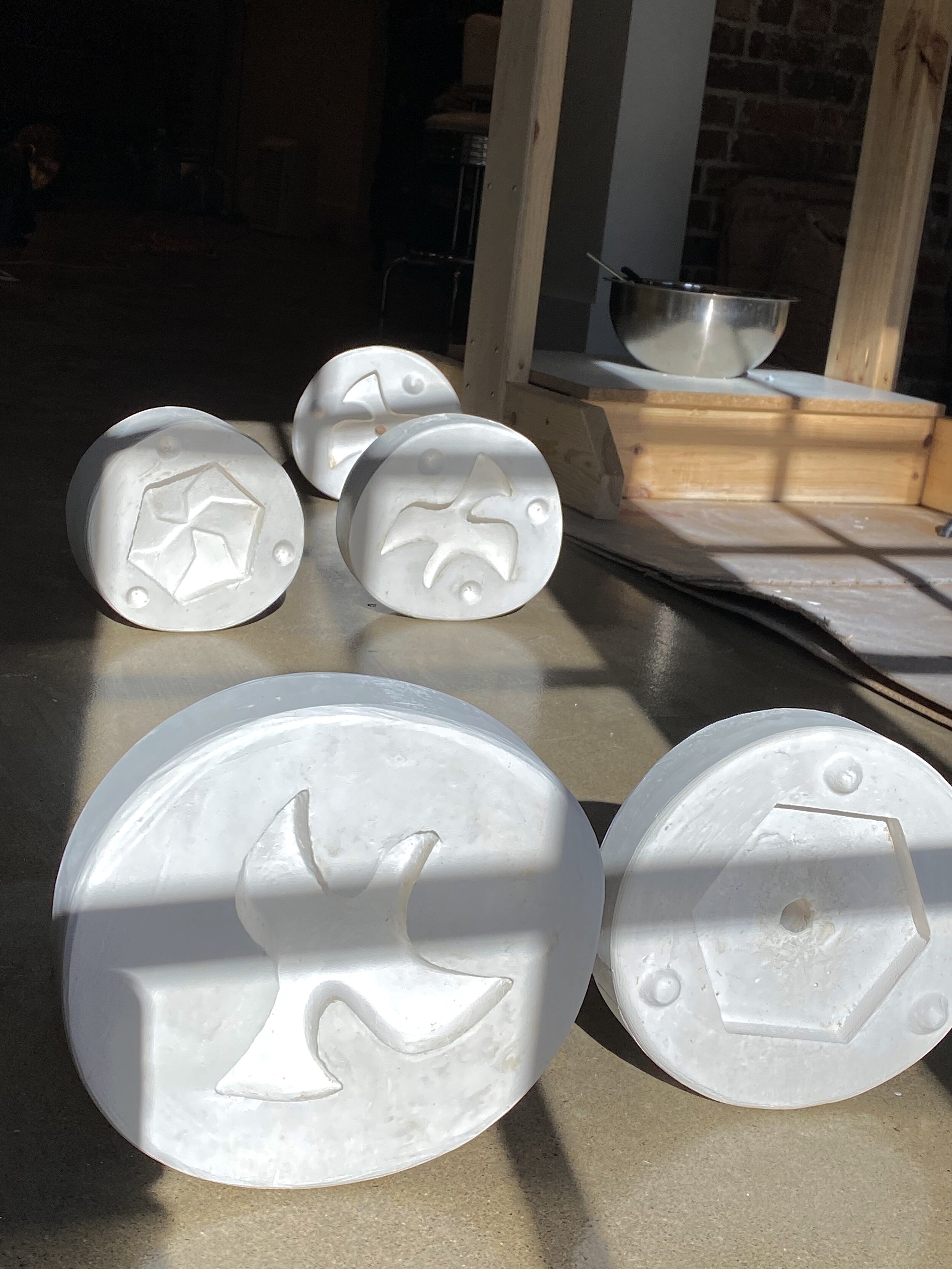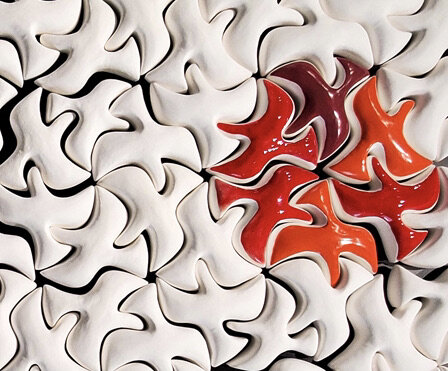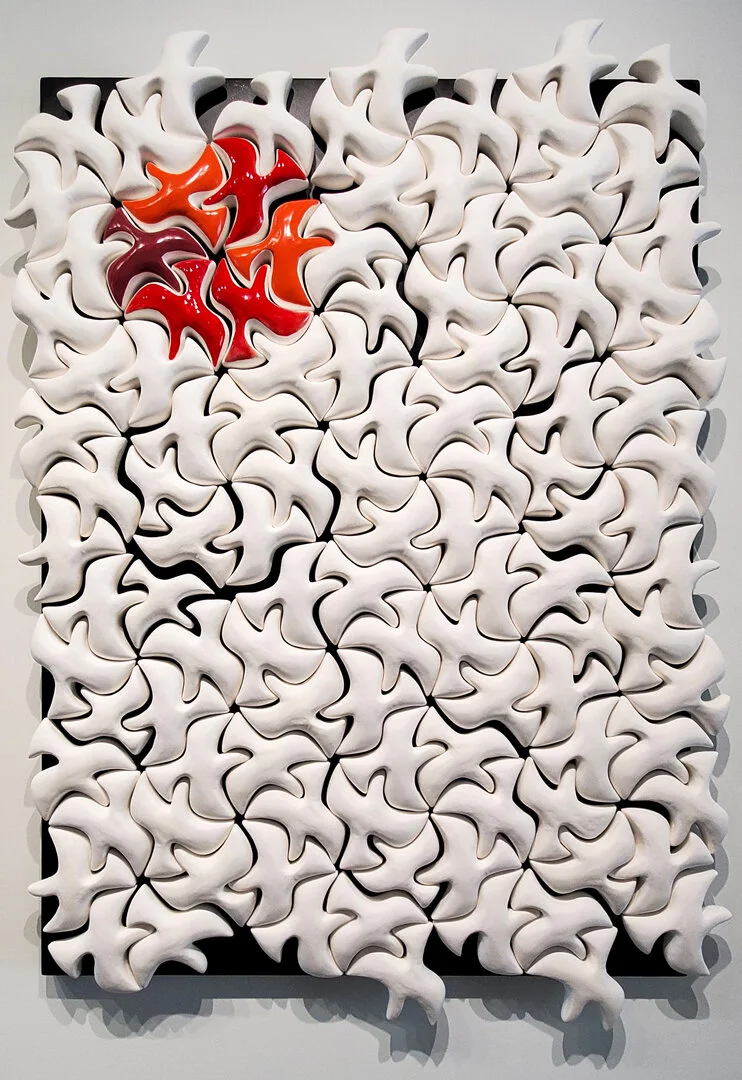
Slip casting a tessellation for a mural, an exercise in patience and perseverance

One of the challenges of clay is that it weighs. I am constantly working on making my sculptures lighter. In parallel, I am interested in figuring out how to hang ceramics on walls. The slip casting process is an ideal technique for both its modularity and light weight.
Once the molds are cast, the possibilities of assembly are infinite, provided they were accurate.
Clay always reminds me if I forget something important. It has no flexibility once it is fired, it dries unevenly no matter the effort to control its humidity and it is unforgiving in its memory. Where the hand left a mark it will find that crease again. Therefore slip casting remains a process entirely dependent on the skill of the artist, no matter how many times the same molds are used.

Bird Tessellation, slip cast





Annick Ibsen’s Algebraic Dignitaries + The Architecture of the Body
Text by Michaela Mullin
Annick Ibsen began work on the “Murmuration” project pre-pandemic, in the Fall of 2019, and it “turned out to be timely.” Not just for the time and focus permitted due to quarantine, but also in the investigative elements re: social relations and intentions. This was the first large-scale project where she “had to create a perfectly geometric shape that would embed itself infinitely.” The repetition and its monochrome white juxtapose the maximal and minimal. And the level of technical precision required was great. It took more than a year to complete this tessellated work, featuring hundreds of the same bird shape (one of Ibsen’s signature forms)—a “ceramic mural” at 7’ x 4’.
Each piece was made using ‘slip casting.’ This, paired with the clay’s weight, was one more challenge in her ongoing attempt to create lighter sculptural works which can hang safely on the wall. Beyond the practical, however, Ibsen notes that, “such a tight formation raises questions of individuality versus group responsibility, how the behavior of one can affect the rest…” Each piece, of course, is slightly different; the impossibility of perfection and perfect replication allows for nuanced change, imperceptible at a distance. For distance is such a cultural motif today, and Ibsen recognizes that when distant, “the crowd seems harmonious […] but each bird flies in a different direction from its neighbor.” In order to make the puzzle work, it must be this way. The ‘fitting’ and modularity offer room for movement and holding. Reconfiguring becomes the law of the sky.

